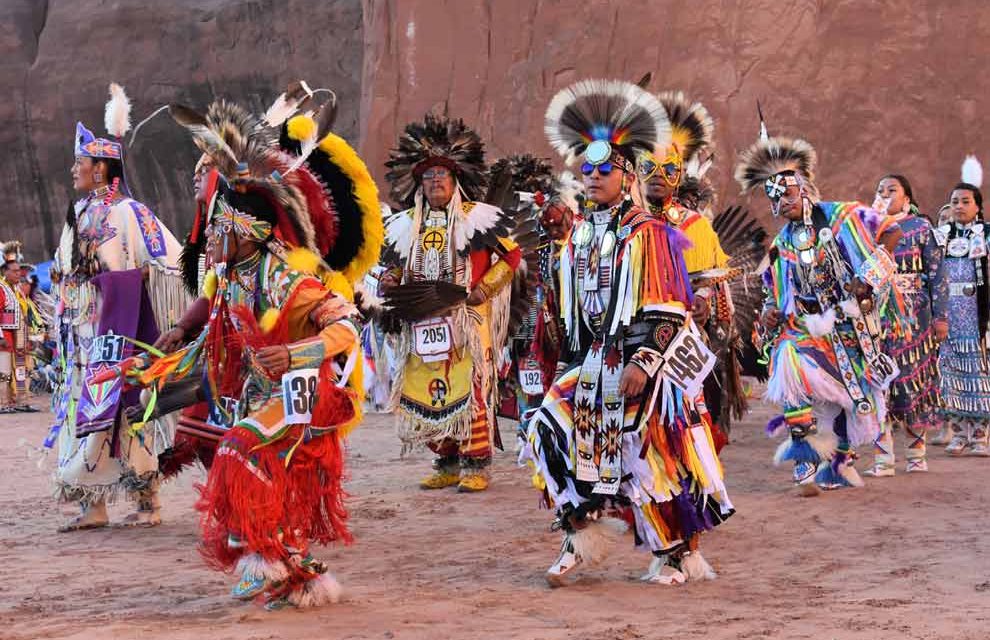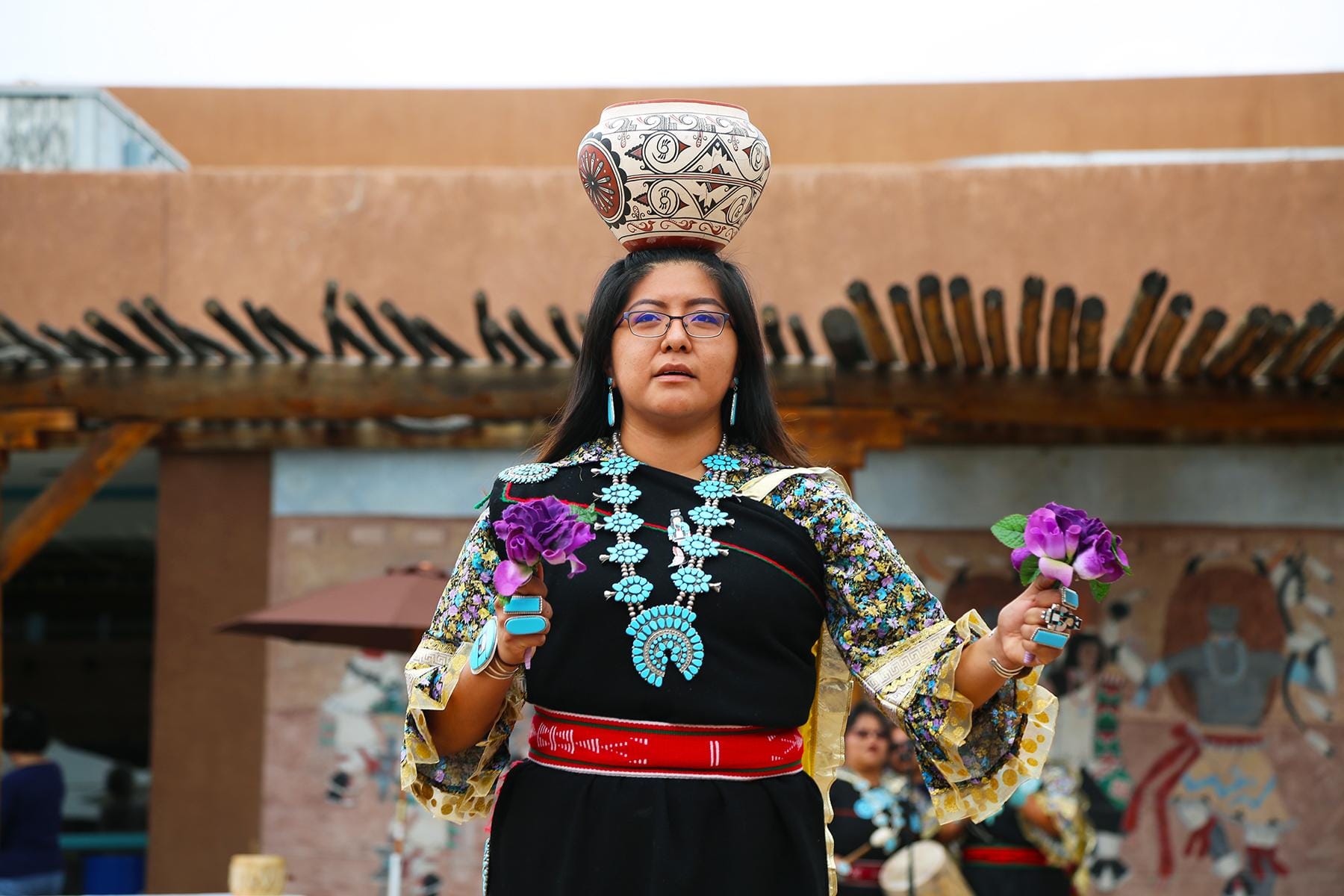
The Enduring Heartbeat of Diné: Cultural Journeys in Navajo Nation, New Mexico
The land of the Diné, stretching across Arizona, Utah, and into the stark, breathtaking landscapes of New Mexico, is more than just a geographical expanse; it is a living tapestry woven from millennia of history, profound spirituality, and an unyielding commitment to cultural preservation. For those seeking a deeper understanding of Indigenous America, particularly within the New Mexico portion of the Navajo Nation, the journey is an immersion into a vibrant, resilient culture that defines itself not merely by its past, but by its dynamic present and hopeful future.
To truly grasp the essence of the Diné, or "The People," as they call themselves, one must first acknowledge the sheer scale and sovereignty of the Navajo Nation – the largest Native American reservation in the United States, larger than ten U.S. states combined. Within its New Mexico boundaries, iconic landmarks like Shiprock (Tsé Bitʼaʼí, or "rock with wings"), a sacred volcanic plug dominating the high desert, stand as silent sentinels to a culture deeply intertwined with its environment. This is not just a place to observe; it is a place to learn, to listen, and to connect with a people whose identity is rooted in the concept of Hózhó – a state of balance, harmony, and beauty in all aspects of life.
The historical backdrop of the Diné is one of remarkable resilience. Their ancestral lands, encompassing parts of the Four Corners region, have been their home for centuries. However, their history also includes periods of immense hardship, most notably the "Long Walk" of 1864, a forced removal by the U.S. government that saw thousands of Diné endure a grueling 300-mile trek to Fort Sumner, New Mexico. Despite the immense suffering and loss, the Diné persevered, eventually negotiating their return and establishing the Navajo Nation. This history of endurance underpins every cultural experience, reminding visitors of the strength and adaptability that continues to define the Diné people today.
The Art of Storytelling: Weaving, Silver, and Language
Perhaps one of the most accessible and profound entry points into Diné culture for visitors in New Mexico is through its renowned arts and crafts. Navajo weaving, in particular, is not merely a craft; it is an ancient form of storytelling, a practice steeped in spiritual significance and handed down through generations of women. Each intricate design, each vibrant color, carries meaning, reflecting the weaver’s personal journey, her connection to the land, and the stories of her ancestors. The wool, often hand-spun and dyed with natural pigments from local plants, becomes the canvas for geometric patterns, natural motifs, and symbolic representations.

"A Navajo rug is more than just something beautiful for your floor," explains Sarah Begay, a fourth-generation weaver from the Shiprock area. "It’s a prayer. It’s our history. Every thread holds a piece of us, our land, and our beliefs. When you buy a rug, you’re not just buying an object; you’re taking a piece of our culture, our story, home with you."
New Mexico is home to several trading posts and galleries, particularly along routes like Highway 491, where visitors can witness these masterpieces and sometimes even meet the weavers themselves. Locations near Farmington and Gallup, though Gallup is often considered the "Indian Capital" due to its proximity to multiple tribes, offer authentic opportunities to purchase directly from artists, ensuring ethical sourcing and supporting the Diné economy.
Equally iconic is Navajo silversmithing. The Diné learned the art of working silver from Mexican artisans in the mid-19th century and quickly developed their unique style, incorporating turquoise – a stone considered sacred and imbued with protective qualities – into their designs. The squash blossom necklace, the concho belt, and intricate stamped bracelets are not just fashion statements; they are cultural symbols, often passed down as heirlooms. The painstaking process of melting, shaping, stamping, and setting stones is a testament to the Diné commitment to meticulous craftsmanship and aesthetic beauty. Visiting a Diné silversmith’s workshop, often found in smaller communities or at local markets, offers a rare glimpse into this intricate art form and the spiritual connection the artisans have to their materials.
Beyond the tangible arts, the Diné language, Diné Bizaad, is a cornerstone of their identity. One of the most complex and robust Indigenous languages in North America, its survival is a testament to the community’s dedication. Its unique structure and tonal qualities were famously utilized as an unbreakable code during World War II by the Navajo Code Talkers, a pivotal contribution to Allied victory. Today, efforts to revitalize the language are strong, with immersion schools and cultural programs ensuring that Diné Bizaad continues to thrive. Hearing the language spoken, whether in everyday conversation or through traditional songs, is a powerful reminder of the deep roots of Diné culture and its ongoing vitality.
Sacred Landscapes and Spiritual Harmony
The physical landscape of the Navajo Nation in New Mexico is inseparable from its spiritual heart. The vast, often stark, desert environment, punctuated by mesas, canyons, and buttes, is not merely scenery; it is imbued with spiritual significance, with specific sites holding ceremonial importance. The Four Sacred Mountains – Blanca Peak (Sisnaajiní), Mount Taylor (Tsoodził), San Francisco Peaks (Dookʼoʼoosłííd), and Hesperus Mountain (Dibé Ntsaa) – define the traditional boundaries of Diné territory, and their presence is a constant reminder of the people’s sacred connection to their ancestral lands. Mount Taylor, particularly visible from the eastern part of the New Mexico Navajo Nation, is a powerful presence, a source of traditional knowledge and spiritual sustenance.
The Diné worldview revolves around the concept of Hózhó, a holistic philosophy emphasizing balance, order, and beauty. This harmony extends to one’s relationship with nature, community, and the spiritual realm. Traditional ceremonies, often led by medicine people (Hataałii), are central to maintaining Hózhó, addressing imbalances, and promoting healing. While these ceremonies are private and not typically open to outsiders, their influence permeates daily life and cultural expressions. The respect for elders, the emphasis on family (K’é), and the deep reverence for the natural world are all manifestations of this overarching philosophy.
Visitors can experience this connection to the land through guided tours offered by Diné guides, particularly in areas like the Bisti/De-Na-Zin Wilderness Area (though technically BLM land, its proximity and cultural significance to the Diné is immense). These guides offer invaluable insights into the geological formations, the flora and fauna, and the traditional stories and legends tied to these landscapes. They provide context that goes far beyond a typical scenic tour, explaining how the land shaped the Diné and how the Diné, in turn, respect and care for the land.
Modernity and Cultural Continuity

The Navajo Nation today is a dynamic entity, navigating the complexities of the 21st century while steadfastly upholding its cultural identity. Its government, headquartered in Window Rock (just across the border in Arizona, but serving the entire Nation, including New Mexico), operates with a three-branch system, reflecting its sovereign status. Schools within the Nation teach both English and Diné Bizaad, striving to educate the next generation in both traditional knowledge and modern skills.
Economic development, particularly in New Mexico, focuses on diverse sectors, from energy resources to tourism and small businesses, always with an eye toward sustainable practices and community benefit. Events like rodeos, agricultural fairs, and powwows (while often pan-tribal, local Diné communities host their own events) provide opportunities for cultural celebration, community gathering, and friendly competition. These events showcase traditional dress, horsemanship, and music, offering vibrant, authentic cultural experiences.
For the respectful traveler, engaging with the Navajo Nation in New Mexico means understanding the importance of ethical tourism. This involves supporting Diné-owned businesses, respecting private lands and sacred sites, and always asking for permission before taking photographs of individuals. It means approaching the experience with an open mind, a willingness to learn, and a deep appreciation for the unique heritage being shared.
The Navajo Nation in New Mexico offers more than just scenic vistas; it presents a profound journey into the heart of a resilient, vibrant, and deeply spiritual culture. From the intricate artistry of their weavers and silversmiths to the enduring power of their language and the sacred connection to their land, every encounter reveals a layer of the Diné story. It is a story not of a past frozen in time, but of a living culture, continually adapting, thriving, and inviting the world to witness the enduring heartbeat of Diné. For those who seek it, the rewards are immeasurable: a deeper understanding of human resilience, a profound appreciation for cultural heritage, and a glimpse into Hózhó – the beauty and harmony that defines the Diné way of life.

